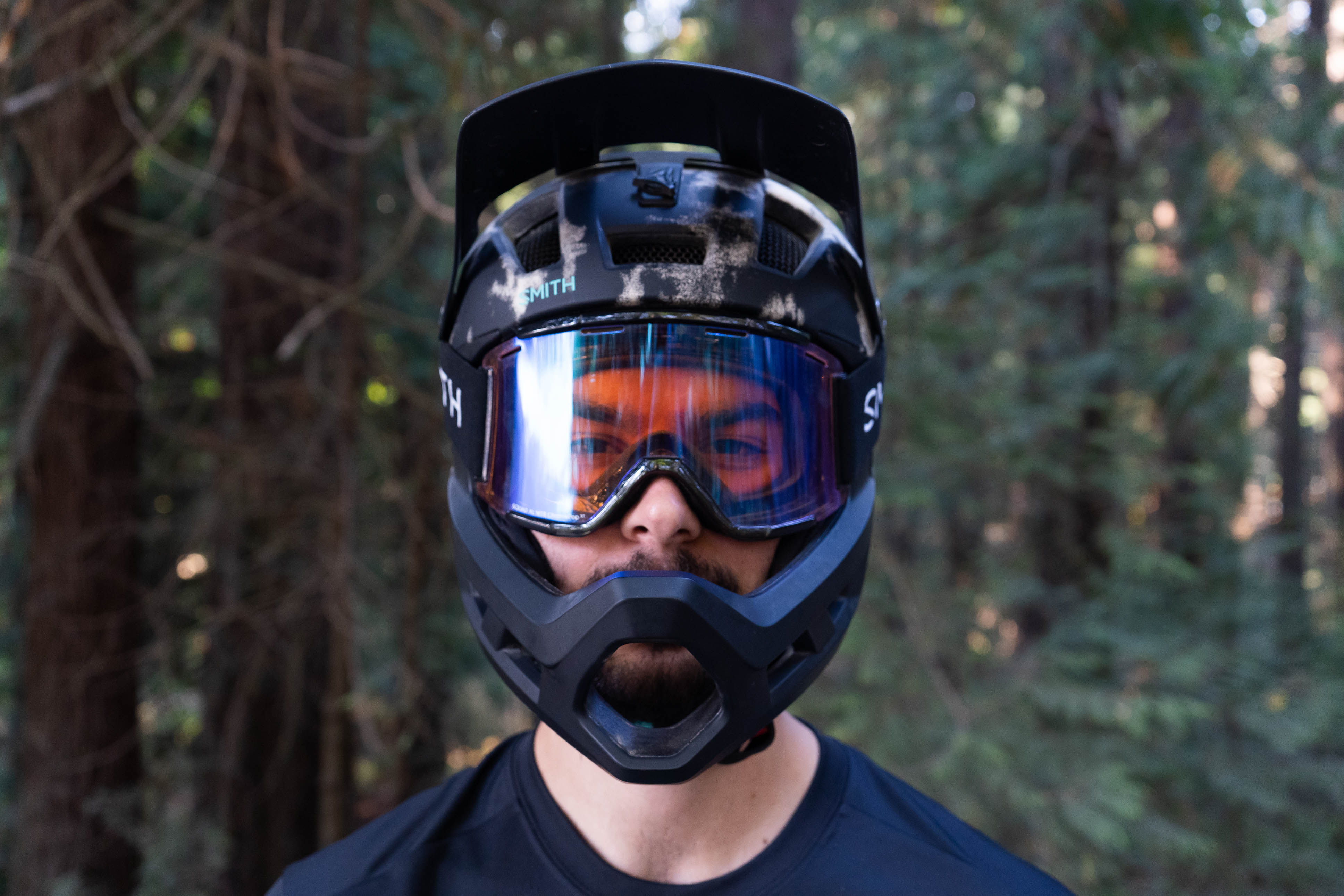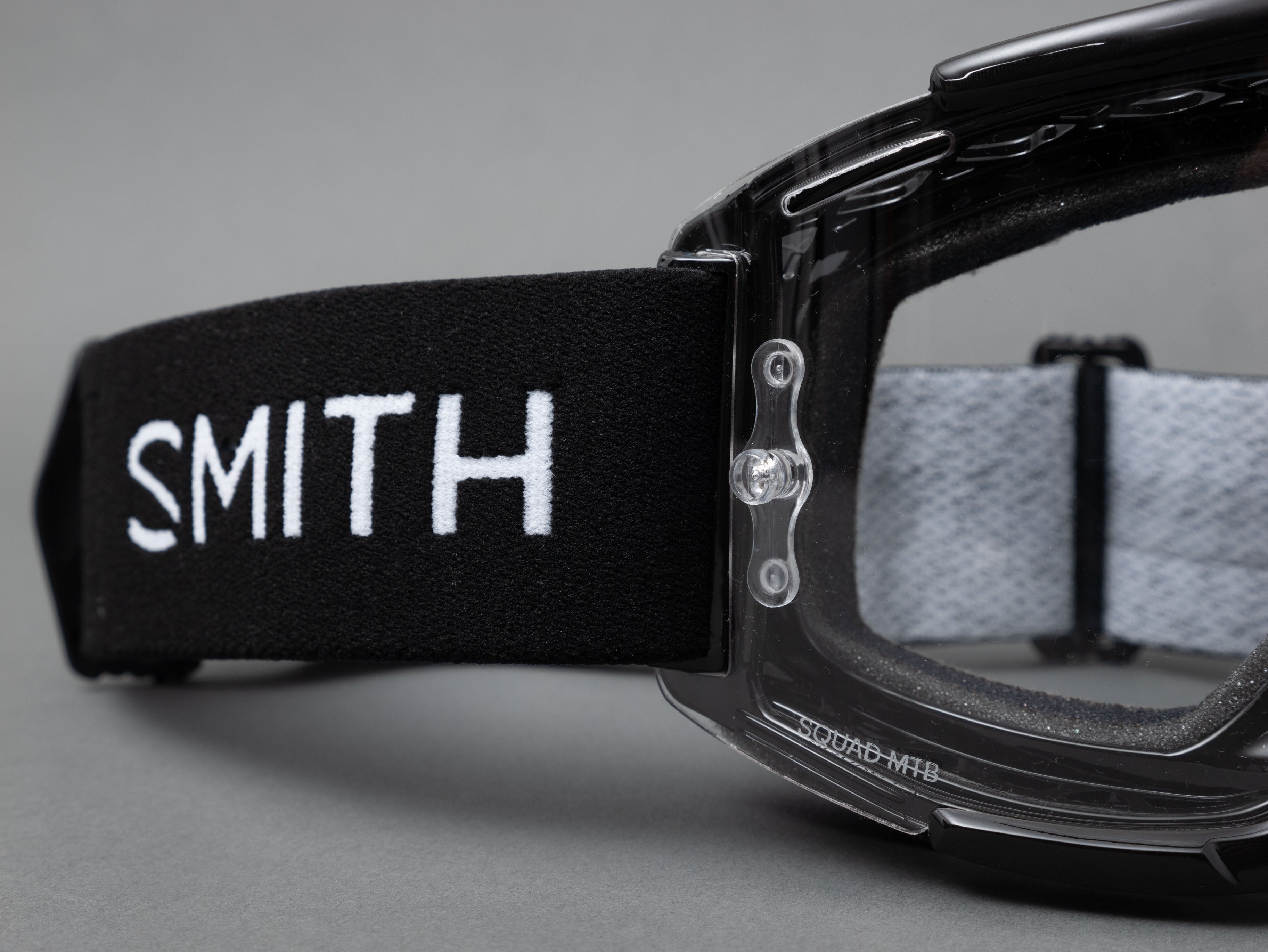The Smith Mainline is an ultra-lightweight full-face helmet created to protect the likes of Elite EWS racers Jesse Melamed and Remi Gauvin. With the average EWS race consisting of numerous grueling transfers and some of the world's longest, most challenging downhill stages, the Mainline had to be robust enough to protect against crashes at elite racing speeds but light and breathable enough to allow it to go unnoticed for a full day of racing.
Having spent the majority of this past summer in the Mainline, I entrusted it to keep me safe in scenarios ranging from all-day pedals to stacking laps at the Whistler bike park in the summer heat. I have previously ridden in both traditional full-face DH helmets and other manufacturers' lightweight “enduro” full faces. While the idea of a lightweight enduro helmet always seemed appealing, in reality I usually found them to be a half-baked attempt at a full DH helmet. I’d find myself feeling vulnerable and questioning their construction; not a feeling you want while depending on something to protect your brain. From my first time trying on the Mainline, it was apparent this helmet was different from other lightweight offerings and was worth some further field testing to see if it was capable of dethroning my go-to DH dedicated full face.
Mainline
Protection
My largest complaint with enduro full-face helmets has been that they still leave me feeling largely unprotected. The typically insubstantial plastic construction is in no way reassuring of my safety if I were to impact a tree at trail speed. One particular manufacturer's helmet has such a wafer-thin construction it left me feeling like I had shoved my head into a plastic beach pail; not the reassurance I'm looking for when piloting my bike through the infamous Schleyer rock garden in Whistler. In comparison, the Mainline is one of the first lightweight full-face helmets I’ve worn that gives me a sense of protection comparable to that of a dedicated DH helmet.

Similar to Smith’s Forefront 2 half-shell helmet, the Mainline features full-coverage Koroyd energy absorption technology. Offering superior impact absorption over standard EPS dual-density foam while being more breathable , Koroyd is an ideal material for creating a helmet that is lightweight and DH-rated. In addition to Koroyd, the Mainline utilizes MIPS to reduce rotational forces in the event of a crash.
Fit
Besides the stock padding, the entire size run of small, medium, and large Mainline helmets include a set of thin cheek pads for a roomier fit and thicker cheek pads for those needing a tighter fit. There are also a set of thicker crown pads for more cushioning at the top of the head, as well as a smaller neck roll pad, that will adjust the fit at the base of the head.
 For me, the stock fit of the medium helmet is spot-on; the cheek pads apply the perfect amount of pressure without creating the “chipmunk cheek” sensation that is a tell-tale sign of a poorly fitting full-face. The neck roll pad creates a sense of security at the base of the head, keeping the helmet stable. I never had any issues with the traditional D-ring strap, and have always preferred their security compared to the buckles or magnetic fixtures seen on other helmets.
For me, the stock fit of the medium helmet is spot-on; the cheek pads apply the perfect amount of pressure without creating the “chipmunk cheek” sensation that is a tell-tale sign of a poorly fitting full-face. The neck roll pad creates a sense of security at the base of the head, keeping the helmet stable. I never had any issues with the traditional D-ring strap, and have always preferred their security compared to the buckles or magnetic fixtures seen on other helmets.
Ride Impressions
The majority of my riding with the Mainline took place in the Whistle Bike Park during the unseasonably hot “second summer” the area experienced. Even before my first lap, the light weight of the helmet caught my attention. A 770g helmet, it weighs less than half of my usual full-face.

Barely three turns down my first run, some unexpected benefits of 21 vent design began to reveal themselves. Because sound isn’t as muffled, there is less of a disconnect between you and the trail. Sometimes that momentary screech of a tire slipping off an off-camber rock can be the difference between reacting in time or taking a quick slab nap. In addition to keeping me cool, the well-ventilated construction provides a heightened sense of speed, a feeling that can be lost with a traditional full-face. Combined, the improved sense of hearing and speed created an on-trail experience closer to a half-shell helmet while still having a chin bar.
Squad MTB
Much like Smith’s lineup of glasses, their goggles have been designed to integrate seamlessly with the profile of their helmets. The profile of the squad goggles creates a tight seal when worn with the Mainline helmet, negating any unprotected space on the brow or interference with the profile of the helmet. The silicone-backed strap stays securely in place and offers a wide range of adjustments to accommodate differing helmet sizes and profiles. The felted foam was extremely comfortable against my face and never caused any restriction in breathing against my nose.

Anyone who has experience with goggles will know that the biggest threat to their visual integrity is fog. Nothing is worse than standing at the top of a run, watching your buddies drop in one by one as you frantically twirl your goggles around in the air trying to clear them of condensation. To eliminate this, the Squad lenses have an anti-fog coating as well as ventilation paths in the frame to increase airflow. When used with the Mainline, the vents on the squad goggles align with the Air-Evac vents on the helmet’s brow and create a channel for air to flow through, clearing fog and keeping you cool.

Lenses
The profile of the Squad MTB lenses is distinct, and offers a massive area of coverage. This translates into an unobstructed field of view, with the edges of the frames barely noticeable. The Squad MTB goggles I tested came equipped with ChromaPop Everyday Red Anti-Fog lenses and a bonus clear lens that is included with every set of Smith goggles. All Squad MTB lenses come with tear-off tabs to ensure visibility when the trails get muddy.

With a Visible Light Transmission (VLT) of 25%, the Everyday Red lens performed best in sunny or partially sunny conditions. I found these lenses to perform similarly to the red lens I had previously tested on the Shift MAG sunglasses. The ChromaPop technology paired with the red tint created increased contrast and definition in jumbled sections of roots and rocks. Featuring a darker tint, they protected against glaring sun and were especially helpful in clear-cut or alpine-level sections where the sun is most prevalent. I used these lenses the least as I found them a touch too dark in heavily wooded sections of trail. Despite their ChromaPop technology, I felt they made transitions from light to dark harsh on the eyes.
Squad MTB XL
The Squad MTB XL is nearly identical to the Squad MTB; the only differences are an ultra-wide strap and the lack of tear-off tabs. I tested the ChromaPop Rose Anti-Fog lens as well as the clear lens on this model. Even having previously used other ChromaPop-equipped sunglasses and goggles, I was astonished by the vision quality the ChromaPop Contrast Rose lens provided. The bluish-pink, 50% VLT lens performed well in every scenario, from cloudless summer days to gray skies spewing sideways rain. This lens had the perfect amount of tint to protect me from the harshness of the sun without overpowering my vision in even the darkest sections of woods.

Lenses
I was most impressed with the ChromaPop Rose lens during a rainy day in the bike park. The purplish/orange hue the lens cast on the terrain brought an added level definition to the otherwise dark landscape. It especially enhanced my vision in the tightly wooded corridors of the trail. Whereas my riding buddy was plagued with constant fog on his goggles, stopping at every trail intersection for another helpless lens wipe, I was more than content with the visibility in my Squad goggles.

On another occasion, I inadvertently had a chance to test the protective qualities of these lenses. Following a friend closely down the shale-riddled section of Original Sin, his rear tire kicked up a rock roughly the size of a quarter. It happened so quickly, I heard the rock impact my goggles before I could even register its trajectory. Leaving a fingernail-deep groove in line with my right eye, I am glad to have been wearing the Squad XL goggles. Had I not been wearing eye protection at the time, I could have had a potentially vision-altering injury, a humbling reality check to always wear protective eyewear when riding.
Verdict
With its lightweight design and confidence-inspiring protection, the Mainline has become my go-to full face for any terrain that justifies a chin-bar. Paired with the precision fit of the Squad goggles, I have no doubts about my protection from the neck up. Much like the seamless integration of Smith’s sunglasses and half-shell helmet lineup, the Mainline and Squad MTB goggles combine for fantastic on trail performance. The form, fit, and function of the helmet and goggles create stand-out products on their own and are only more desirable when combined.




